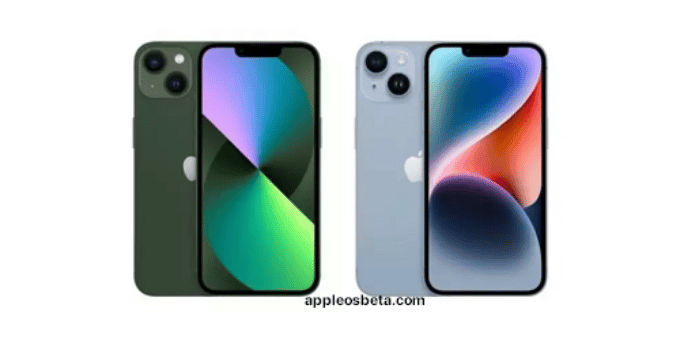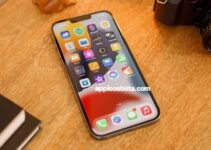iPhone 14 vs iPhone 13, which one to choose? iPhone 14 or iPhone 13? Choose this year’s “cheap” iPhone, or last year’s iPhone, which, as always, remains on the price list at a lower price? The question becomes even more urgent considering that the two phones are very similar and at the same time not very different even from the iPhone 12.
6 useful features of the Calendar app on Mac (macOS) that you might not know about
Aesthetics
Starting in the first place from the appearance, let’s say right away that it is difficult if not impossible to understand whether we have an iPhone 13 or iPhone 14 in our hand. Even with a magnifying glass in your hand, it will in fact struggle to perceive the differences between the two models.
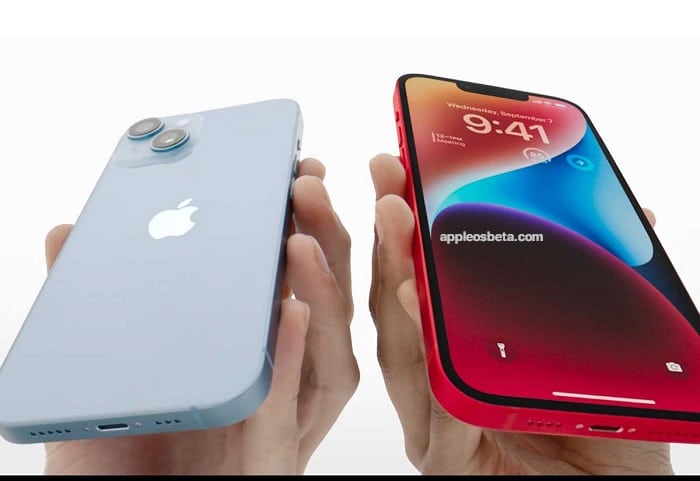
Both phones are made of the same precious materials, namely glass and aluminum, as well as the protective Ceramic Shield on the front glass. The design is also identical: the front notch is the same on the two devices since Apple introduced the Dynamic Island only on the iPhone 14 Pro models. Apple had reduced the notch from iPhone 12 to iPhone 13 but iPhone 14 does not change compared to iPhone 13
Dimensions do not change either, (unless you want to consider the lesser thickness of 0.016 cm and the weight of a lesser gram of the iPhone 13 a change). Only the camera platform is slightly smaller in the iPhone 13 than in the iPhone 14.
Technical features
The data sheet also offers several similarities. Indeed, as already mentioned, the similarities of the differences are enormously more. Of course those specifications that matter most remain the same or almost.
Display
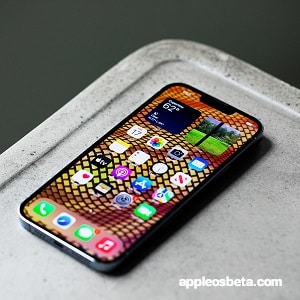
If you start from the display, it is the same: 6.1-inch diagonal Super Retina XDR, with a resolution of 2532 × 1170 and a pixel density of 460 ppi, with the same contrast of 2,000,000: 1.
Both displays support True Tone, wide P3 color gamut, and both achieve the same peak brightness, of 800n, 1200 for HDR content.
Processor
For the first time, Apple has decided to offer the same CPU as the previous model. The standard models of the iPhone 14, in fact, mount the A15 Bionic chip, with a 6-core CPU, with 2 core performance and 4 core efficiency. Both iPhones feature the 16-core Neural Engine.
What changes is one more core in the GPU: iPhone 14 offers a 5-core GPU, while iPhone 13 a 4-core. This is too small a difference to be able to appreciate it in an obvious and immediate way. Probably, this extra core will be used for games, and for the new computational photography features that the iPhone 14 is equipped with.
Photography
If the aesthetics are identical, and the data sheet is very similar, the area where the iPhone 14 should have some advantage is in the cameras. There are always two on the back, arranged identically to the iPhone 13, as well as one on the front inside the notch.
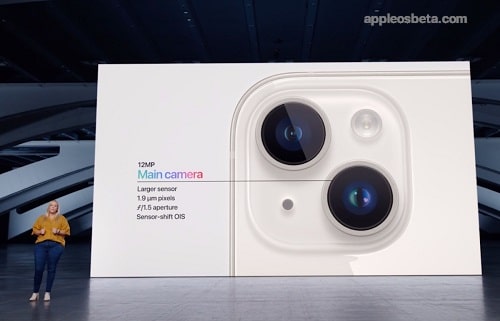
Both rear sensors of the iPhone 14 are 12MP, just like the predecessor. This is the main module, flanked by the ultrawide one. However, the main sensor of the iPhone 14 is larger than its predecessor, with pixels larger than 1.9 microns, and with a faster f / 1.5 aperture.
This should lead to better photos and videos, offering more detail and less noise. Night mode should also be improved with exposure now twice as fast. Additionally, the Photonic Engine feature found only on the iPhone 14 helps improve low-light performance across all cameras.
The front camera of the iPhone 14 has also changed. This new TrueDepth camera, albeit 12MP like the iPhone 13’s predecessor, has a ƒ / 1.9 aperture (versus 2.2) which should help in low light conditions. Furthermore, for the first time, autofocus is obtained on a front camera.
In terms of video, Apple has introduced a new Action mode, to add better stabilization to moving videos.
Satellite SOS
iPhone introduces the satellite emergency call system. This will allow you to send messages in areas where there is no field, so you can ask for help in really extreme situations. At the moment the launch is scheduled in the USA and Canada. Also, iPhones sold in China, Hong Kong and Macau do not have this feature. Finally, Apple specifies that Emergency SOS may not work in places that are above 62 degrees of latitude, therefore the northern areas of Canada and Alaska.
The service will still be free for 2 years, then it will be by subscription, but Apple has not disclosed the prices.
The satellite connection for emergencies of the iPhone 14 allows you to send only short text messages, basically predefined, including the coordinates of the position, to the rescue centers. Calls cannot be made.
Autonomy
In terms of autonomy iPhone 14 reaches a maximum of 20 hours of video playback, 16 hours of streaming video and 80 hours of audio. The iPhone 13, on the other hand, is slightly less: it is rated for 19 hours, 15 hours and 75 hours. Also in this case there seem to be really marginal differences, hardly noticeable in daily use, except in special circumstances.
